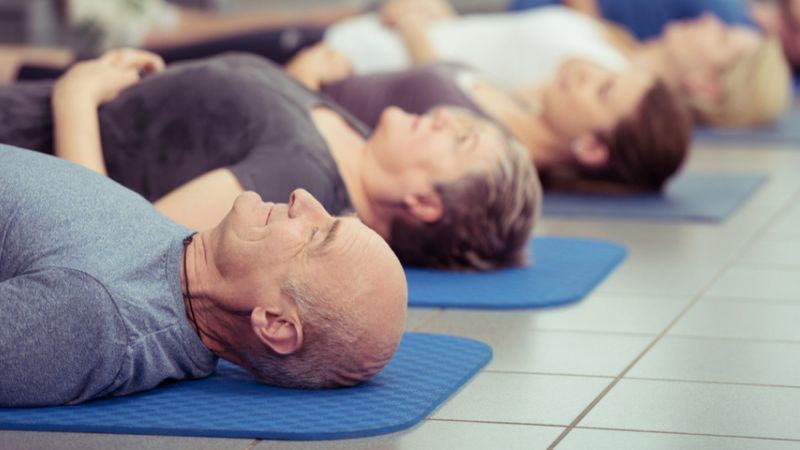As people age, posture can often become problematic. Posture is actually an early sign of aging. Many people suffer from unnatural curves in their upper and lower backs, especially for anyone who works at a desk all day. We’ve all seen the effects: shoulders creep up toward the ears and the head juts forward.
All of this is not only uncomfortable, but it also affects circulation and causes headaches. To help combat poor posture, we first must understand where poor posture comes from. Poor posture is not something that happens overnight. In fact, poor posture can take a lifetime to develop.
Poor posture causes can include:
? Osteoporosis
? Slouching
? Technology use
? Wearing high heels
? Genetics
? Stress
? Muscle weakness
? Injury
Regardless of what is causing poor posture, the effects on the body can be debilitating and limiting in terms of quality of life.
The Effects of Poor Posture On The Body
What starts out as a slouch that your mother tries to correct in high school, can become a lurch during your working years, and ultimately, a hunch later in life. Poor posture can have a negative effect on one’s health, including:
- Your range of motion decreases as muscles and ligaments are forced to tighten or overstretch. This can create pain in the low back, jaw, shoulders, and elsewhere.
- Limits your lung capacity as the size of the chest cavity can decrease. People with poor posture often experience discomfort in their shoulders and upper extremities.
- Temporomandibular joint disease (TMJ) — which can cause excruciating pain in the area by the ears. According to Journal of Orofacial Pain, TMJ and forward head posture were found to be related. Prior to studies of this nature, people believed that TMJ was only related to dental issues.
There are, however, preventative measures you can take in order to improve your posture and your health.
Tips to Improve Your Posture
There are a variety of ways to improve your posture and maintain good posture as you age.
Exercise Regularly
In a recent study published in the Journal of Physical Therapy Science found that participants who used a prescribed exercise program saw reduced pain levels in the shoulders and in their mid and low backs. No cardio or strenuous exercises were prescribed. The exercises work well because they are designed to realign the neck, jaw, and back. They also strengthen the core muscles, which are important to maintaining good standing and sitting posture.
If you sit throughout the day, one of the best things you can do is take time to get up and move. Try to get up at least once every 15 or 20 minutes. Your muscles need to move and they will become strained from repetitive movement or lack of it. After too much time sitting, your shoulders and head will slouch, but moving will help prevent it. If you cannot get up to move at regular intervals, add some shoulder shrugs and seat cat-cow stretches to help reduce stress on the back, neck, and shoulders.
Practice Yoga and Pilates
The exercises used in both yoga and Pilates are designed to strengthen the core muscles and improve posture by realigning the spine. The series of postures in Bikram Yoga work every muscle in the body. This style of yoga focuses on balance and spinal alignment, too. It is a style of yoga that is accessible to people of all ages and abilities.
Relax
We often forget to take good care of ourselves and our posture suffers because of it. There are several relaxation techniques that can help improve your posture and spine. We recommend rolling up a towel and laying it on the floor. Then, lay on the towel so it is directly under your spine from the base of your neck to your tailbone. As you rest on the towel, let your muscles relax and your extremities become heavy. Slow your breath down and enjoy doing nothing. Do this for at least for a few minutes.
In addition to a towel, some people will also use half of a foam roller for more support. Building relaxation into your day will help more than just your posture, study after study, like those published by the National Center for Complementary and Integrative Health.
Make Small Changes For Better Posture
Posture can also be greatly affected by your daily habits. From the way you use your mobile phone to the medication you take, there are steps you can take to maintain good posture as you age.
Get an eye exam. If you have issues with your vision, you might hold your head in an unnatural position. This will affect your neck and shoulders as they work hard to provide support. Getting your vision checked annually and wearing prescription lenses (if necessary) is an easy way to maintain good posture.
Evaluate the location of your television. If your television is not at an ideal distance from your chair, you might watch TV from a slouched position. Researchers in Brazil published a study about children’s viewing habits and the relationship to neck pain. They found that there is an ideal distance for each television size. It’s recommended sitting about 6 ft. away from a 40-inch television. and 8 ft. away from a television that is 50-inches or larger.
Become aware of your shoulders. If your shoulders begin to creep up toward your ears, your posture is moving out of alignment. Relaxing your shoulders will help return to an ideal shape. It takes time to develop body awareness, but once you do, you can make a positive impact on your posture.
Visit Medical Guardian for additional health and wellness resources for happy, healthy, aging in place. It’s never too late to begin taking care of your posture!
Learn more about Dr. Brent Wells, D.C. and his clinic: https://betterhealthalaska.com/chiropractor-wasilla/

